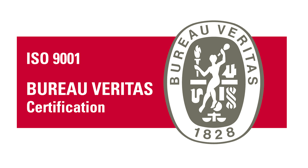Article

EPO Approach to Priority Entitlement: Clarification by Recent Board of Appeal decision
While claiming priority in the US or other countries outside Europe may not be a sensitive issue, there are potentially deadly pitfalls in claiming priority at the European Patent Office (EPO) for a subsequent European Patent (EP) application or the EP phase of a Patent Cooperation Treaty (PCT) application.
An invalid priority claim may strongly jeopardize the protection of a technology in Europe, particularly in the field of life sciences, where inventor’s own results are regularly published in the priority year and there is no exclusion from prior art of disclosures by the applicants/inventors.
One of the essential requirements for validly claiming priority at the EPO is the "same applicant or successor in title" requirement according to Art. 87(1) of the European Patent Convention (EPC), which corresponds to Article 4A of the Paris Convention for the Protection of Industrial Property.
Entitlement to priority was at issue in a recent decision of the EPO Board of Appeal in case T 844/18 concerning one of the CRISPR gene editing patents.
The PCT application from which the patent derived was jointly filed by three entities, claiming priority rights from 12 US provisional applications filed in the name of different sets of inventors as applicants. Depending on the priority documents, some inventors were added or removed, in line with US practice.
The opposition division revoked the patent based on lack of novelty, considering that the priority claim was not valid because all applicants of the US provisionals were not applicants of the PCT application. One co-inventor, applicant for the US provisionals, was missing from the patent application and had not transferred the priority right to the remaining applicants.
In defense of the priority claim, the patent proprietors challenged the EPO’s approach to the assessment of legal entitlement to priority based on three main arguments:
- Entitlement to priority should not be assessed by the EPO, but by competent national courts (in this case US courts), as for any other property right.
- Based on proper linguistic analysis of "any person" in Art. 87 (1) EPC, each applicant of a priority-application filed by joint-applicants can exercise the right of priority without the others.
- The respective national law should at least be applied by the EPO when assessing who "any person" could be. The applicant status is linked to the country where the priority right arises. US law does not require all original applicants to be named on subsequent applications claiming priority.
The Board rejected all three arguments.
In relation to the first argument, the Board decided that the instances of the EPO are both empowered and obliged to assess the validity of a priority claim as required by Art. 87(1) EPC. The Board confirmed that the EPO does not perform a substantial assessment of the legal entitlement to claim priority, but only a formal assessment of who has performed the act of filing the patent application.
In relation to the second argument, the Board accepted that the ordinary meaning of "any person" was ambiguous, but found support for the "all applicants" interpretation in the authentic French text of the Paris convention (« celui qui »), in the object and purpose of the Paris Convention, and in the many decades of EPO and national practice.
In relation to the third argument, the Board concluded that the Paris Convention was the law which determines who "any person" is. According to the Board, that person is simply "the person or persons who carried out the act of filing", this requiring a formal assessment without regard to inventorship.
This decision therefore affirms the EPO’s existing case law and practice according to the so-called "all applicants" or "same applicants" approach. When filing a PCT (or EP) application claiming priority of a US provisional filed in the names of the inventors, it is recommended to file the subsequent application in the names of the inventors if it is not possible to obtain appropriate assignments before the filing of the application. Rights in the subsequent application can then be assigned from the inventors to appropriate entities after filing.
























